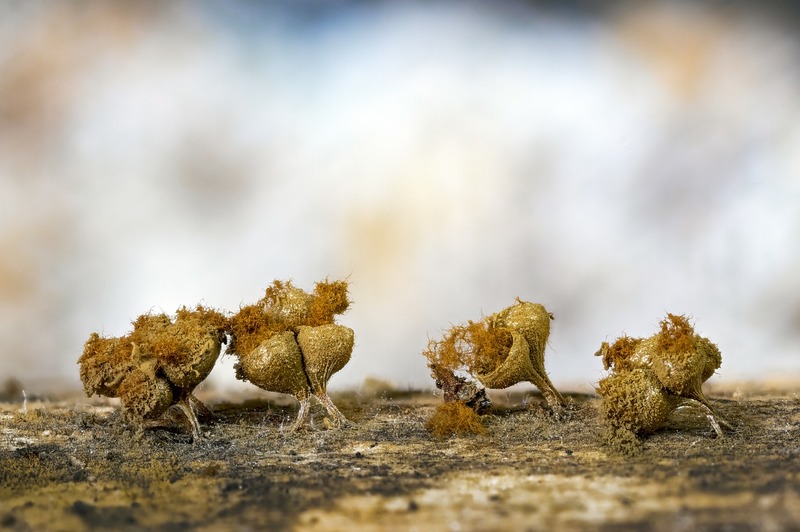Thousands of organisms can cause problems in your home, and knowing their differences, as in how do mold spores differ from bacterial endospores, will make dealing with them more accessible. After all, dealing with these kinds of mess goes farther than just wiping off what you see, but also making sure they’re dead and will no longer spread.
While they are as messy or even more so than cleaning dust off your stuff, fungal and bacterial infestation are way worse though a little less common than them. Unlike dust, these things can spread and expand into massive colonies when left out of hand.

Other than their capability of starting colonies on new and adjacent surfaces, these organic colonies are not just a mess to clean. Natural decomposers tend to eat up the things they land on to create more of their parts to spread around and survive and leave you with destroyed property and even possible allergies.
Difference Between Mold Spores And Bacterial Endospores
Knowing the difference between two things basically requires you to make an unbiased comparison. Doing such will let you learn the facts about the things you’re discovering better, and you’ll be able to believe, remember and use such learnings readily.
Since you want to know about both mold spores as well as bacterial endospores, we’ll cover as much as we can. Let’s go through their definitions, similarities, and differences.
Mold spores
Starting off with mold spores, it is produced by molds as a means of reproduction.
Molds are in the fungi family, which utilizes spores to multiply and form colonies. These spores spread through the air and contact an organic food source and a moist environment.
Bacterial endospores
Bacterial endospores, on the other hand, are simplified forms of bacteria. Unlike a mold spore that needs a damp area and a food source to thrive on, bacterial endospores allow it to adapt to adverse environmental conditions.
The purpose of an endospore is to protect the bacteria in harsh environmental conditions by forming a protective layer that shields the bacteria.
Another main difference between a mold spore and a bacterial endospore is its cellular structure and composition. A mold spore as a type of fungi is classified as a type of eukaryotic cell, while a bacterial endospore is classified as a prokaryotic cell.
In scientific terms, these two differ in many ways, but in simpler terms, a prokaryotic cell has a much simpler structure compared to that of a eukaryotic cell.
What are spores?
Spores are entities that can be found in species of plants and bacteria. In scientific definition, spores are microscopic entities with a single nucleus designed for dispersal and propagation.
In more straightforward explanations, spores enable plants and some other types of bacterias to reproduce and survive.
Unlike reproductions that use gametes, sporadic reproduction does not need to fuse to create new organisms, which is called asexual reproduction. Spores can also be found in bacterias, but not unlike plants, spores in bacterias are not involved in reproduction.
Spores in bacterias function as a protective organ designed to help the bacteria thrive in harsh environmental conditions. These conditions include high temperature, toxic enzymes, lack of moisture or dryness, and lack of food source.
If you’ve been seeing these molds out there lately, here’s the causes mold on outside of house and how you can deal with it.
How do spores work?
As it stands, spores have different functionality depending on what organism they are from. For plants such as fungi, algae, and sporangial plants, spores function as a means of reproduction.
Spores are a type of reproductive cell capable of reproducing without the means of fusion.
Different plant species have other spore structures and utilization. In algae, spores are still used to reproduce, but algal spores can be motile or non-motile, characterized by flagella.
Algal spores can reproduce either asexually or sexually, depending on the conditions.
In sexual reproduction, spores as a zygospore formed by the algae sex cells lie dormant until a favorable situation arises. When the conditions are right, these zygospores undergo meiosis to produce haploid spores that reproduce asexually.
The most common spore-producing member of the plant family would be that of the fungi. Molds can also infest plants though and here’s how to treat sooty mold on plants.
Fungal spores have two primary functions, which is reproduction through dispersal and survival. Spores in fungi do not have flagella like an algal spore and therefore rely on outside factors to spread and multiply like the wind, for example.
Fungal spores have two types of ejection in the sporangia, which holds the spore, which is ballistospore and statismospore. Ballistospore type of ejection forcefully ejects spores in the sporangia to be distributed in the environment while the statismospore does the latter.
Another organism that utilizes spores would be bacterias. However, as mentioned beforehand, spores in bacterias are not involved in reproduction.
Spores in bacteria are an organ that provides bacterias protection from the environment. The spore allows bacterias to survive in harsh places.
Conclusion
To determine how do mold spores differ from bacterial endospores, you must understand the cellular aspect of the two. The difference in the cellular structure also causes a difference in the functionality of the form itself.
In this case, it would be the reproduction of the mold spore and the protective layer of the bacterial endospore.
